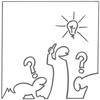Learning Objective(s)
- To enable learners to demonstrate their adaptability to a problem or situation. It is also to build chemistry, teamwork, communication and creative thinking.
- To build something to protect a raw egg from a high fall. 10+ foot fall works best; will the eggs survive?
Instructions
- Divide the group into small teams of 3 – 4. Give each team one raw egg, 30-40 straws, 1 meter of duck tape, and other materials as listed below.
- Explain the rules of the teambuilding activity. Tell them that the goal is to design and build a structure that will prevent their raw egg from breaking from a high drop. Teams will be given about 15 minutes to make the structure. If more than one team is successful, then the team that uses the least amount of straws wins. Should more than one team succeed in protecting their egg, the winner will be determined by the fewest straws used.
- Separate the teams so they are not very close to each other (to prevent copying ideas).
- Say GO! and give teams 15 minutes or so to build their structure, with an egg inside.
Winning the Game
At the end of the time limit, bring everyone back together. Drop each structure in a consistent way. After dropping all structures, open them up and figure out which eggs have remained intact. The winning team is the one with the least number of straws used.
Collecting and Sharing student results
Through group discussion and reflection activities. We will also observe the dynamics, behaviors and roles demonstrated within the activity.
Reflect on experience and effectiveness of teamwork and adaptability as a group discussion. Ask about changes to design over the activity. Ask about traits or characteristics of good leadership/teamwork and the contributions made to the activity. Ask them what they would do differently next time.
Instructions
- Divide the group into small teams of 3 – 4. Give each team one raw egg, 30-40 straws, 1 meter of duck tape, and other materials as listed below.
- Explain the rules of the teambuilding activity. Tell them that the goal is to design and build a structure that will prevent their raw egg from breaking from a high drop. Teams will be given about 15 minutes to make the structure. If more than one team is successful, then the team that uses the least amount of straws wins. Should more than one team succeed in protecting their egg, the winner will be determined by the fewest straws used.
- Separate the teams so they are not very close to each other (to prevent copying ideas).
- Say GO! and give teams 15 minutes or so to build their structure, with an egg inside.
Winning the Game
At the end of the time limit, bring everyone back together. Drop each structure in a consistent way. After dropping all structures, open them up and figure out which eggs have remained intact. The winning team is the one with the least number of straws used.
Collecting and Sharing student results
Trough group discussion and reflection activities. We will also observe the dynamics, behaviors and roles demonstrated within the activity.
Reflect on experience and effectiveness of teamwork and adaptability as a group discussion. Ask about changes to design over the activity. Ask about traits or characteristics of good leadership/teamwork and the contributions made to the activity. Ask them what they would do differently next time.
Assessment Methods
- Observation
- Discussion
- Reflections
- Feedback forms
Resources needed
- Raw Eggs (one for each person plus a few extra incase of an early egg break)
- Cardboard
- Duct tape
- Several thin straws (around 30 per group)
- A place to drop them from a height
- Paper towls for cleanup


 15-30 Minutes
15-30 Minutes











